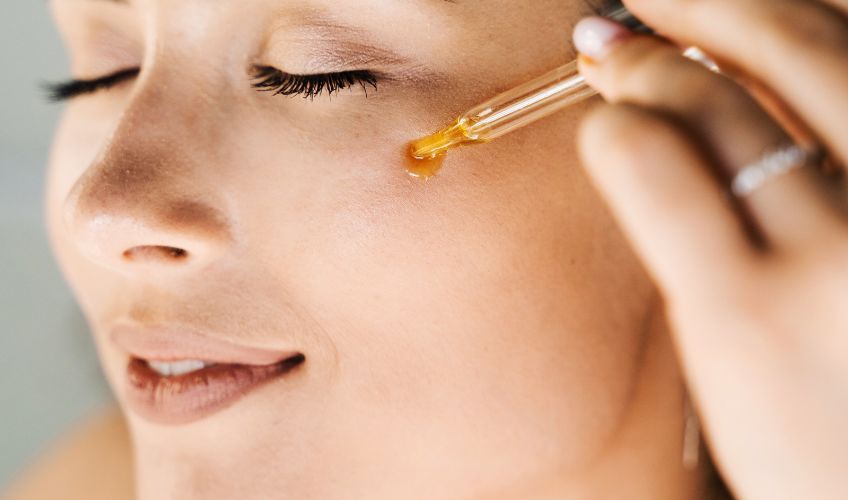You might be curious about which ingredient perfectly suits your skin type. Upon starting your search, you might encounter a vast array of skincare components, many of which you may not recognize.
Recently, there has been growing awareness among individuals about effective skincare ingredients. Each one functions uniquely to enhance the skin's condition.
Among these numerous products, two standout ingredients serve as essential elements in skincare routines—Salicylic acid and Hyaluronic acid. These two potent components have gained significant success in the skincare industry.
Let's delve deeper into these ingredients and discover whether Salicylic acid and Hyaluronic acid can be used together.
What is Salicylic Acid

Salicylic acid (1) is a BHA (Beta hydroxy acid) that is oil-soluble. Derived from willow bark, it possesses anti-inflammatory properties. It helps combat redness, dark spots, inflammation, and uneven skin tone in your complexion.
Salicylic acid (2) is effective in treating acne, blackheads, and whiteheads. Its oil-soluble nature allows it to penetrate deeper into the skin. Once it reaches the deeper skin layers, it begins to unclog pores and removes dead skin cells, which are the main culprits behind acne. This process of removing debris from beneath the skin is called exfoliation.
Individuals with various skin types can use salicylic acid for cleansing and exfoliating. However, it is particularly recommended for people with oily skin. Excess oil or sebum production in oily skin can block pores, resulting in pimples or acne.
Hyaluronic acid (3) is a renowned component in skincare products
What is Hyaluronic Acid

It ensures the skin remains both hydrated and moisturized. Being a humectant, hyaluronic acid has the ability to retain moisture within the skin barrier. This substance is a naturally occurring element found in the skin, playing a crucial role in preserving the skin's moisture and elasticity.
As people grow older, the amount of hyaluronic acid in their skin diminishes. This reduction results in noticeable fine lines and wrinkles due to a lack of skin hydration. Utilizing skin care products infused with hyaluronic acid can help rehydrate the skin and also serve as an anti-aging remedy.
Indeed, salicylic acid can be paired with hyaluronic acid and incorporated into your daily skincare regimen. This combination has been shown to effectively address various skin concerns.
Can Salicylic Acid and Hyaluronic Acid Be Combined?
In addition to their effectiveness, using these two powerful ingredients together is quite safe. The exfoliating qualities of salicylic acid complement the moisturizing properties of hyaluronic acid, addressing different skin issues.
Benefits of Using Salicylic Acid with Hyaluronic Acid
The potential advantages of integrating both salicylic acid and hyaluronic acid into your skincare routine include: Salicylic acid’s exfoliating action can dry out the skin but also clears clogged pores. Hyaluronic acid helps maintain moisture to counteract salicylic acid’s drying effects.
Exfoliation promotes smoother skin texture while hydration provides plumpness. Both ingredients can help prevent acne in acne-prone skin and combat signs of aging, resulting in youthful, glowing skin.
Side Effects of Using Them Together
While the combination of salicylic acid and hyaluronic acid offers numerous benefits, it is important to consider possible side effects:
- Skin Sensitivity: For those with sensitive skin, a high concentration of salicylic acid may cause irritation. Start with products that have lower concentrations of these ingredients.
- Dryness: Exfoliation can lead to skin dryness. To mitigate this, begin by incorporating hyaluronic acid before introducing salicylic acid.
- Over-exfoliation: Combining both ingredients can inadvertently lead to over-exfoliation, causing sensitivity, redness, and peeling. If this occurs, stop or adjust your usage immediately.
With careful application, these two ingredients can significantly improve skin health and happiness. The effective use of these products depends on applying them in the correct order, typically from the thinnest to the thickest consistency.
For oily, combination, or acne-prone skin, apply salicylic acid first, followed by hyaluronic acid.
For dry skin, use hyaluronic acid initially, then follow with salicylic acid. Applying hyaluronic acid first helps counterbalance the drying effect of exfoliation.
Conclusion
Skincare is a personalized journey. Each individual’s skin type varies, and what works for one person may not work for another. Finding the right balance of products can lead to radiant, acne-free skin.
If you have any skin issues or concerns, it is advisable to consult a dermatologist to determine the ingredients and concentrations best suited for your skin type.
Related Articles